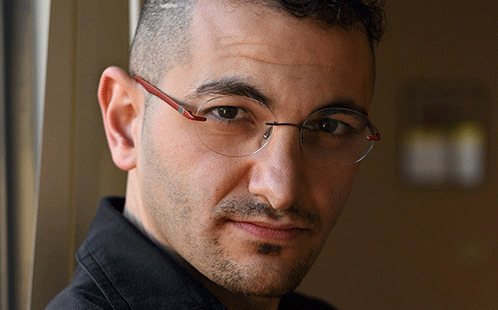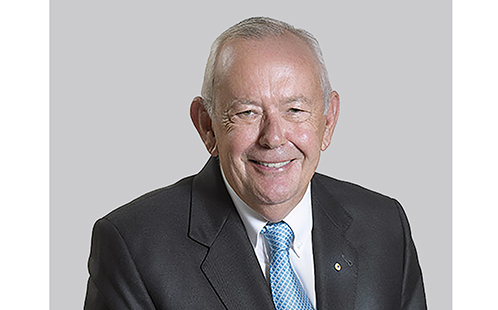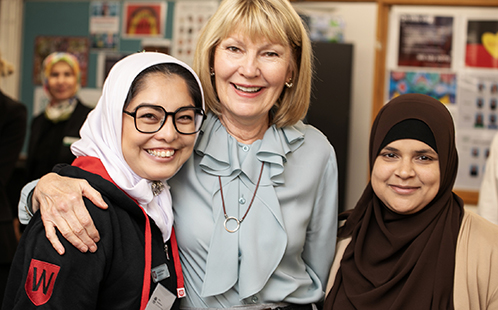Radical, young, Muslim: the Arab-Australian novel in the 21st century

The following opinion piece, by Dr Matthew McGuire from the UWS Writing and Society Research Centre, was first published at The Conversation.
Earlier this year Michael Mohammed Ahmad was voted one of Australia's Best Young Writers by the Sydney Morning Herald (SMH). The 2015 list, which included Maxine Beneba Clarke, Omar Musa, Alice Pung, and Ellen Van Neervan, was described by the SMH's Linda Morris as a group of "outsiders writing about what it is to be an outsider".
It is, however, Ahmad's insider account of what it means to be Arab-Australian in the 21st century that singles out and distinguishes his work. Melbourne University professor Ghassan Hage described Ahmad's literary debut The Tribe (2014), as "an astonishing novel". Angelo Loukakis, writing in the Sydney Review of Books lauded the book's insistence upon a community that is immanently "worthy of art".
In an interview on The Conversation in January, Ahmad said:
For the last two decades the representation of Arab-Australian Muslims has been coloured by media reports of terrorist conspiracy, sexual assault, drug-dealing and drive-by shootings. I wrote The Tribe in an attempt to step beyond these limited and simplistic images. I wanted to offer a complex and humanising portrayal of my community and culture which, as we have all learnt in recent months, is playing an increasingly important role in contemporary Australian society.
I wrote The Tribe for Australians.
Published by Giramondo Press in 2014, the novel presents the world through the eyes of a child called Bani. Through Bani, we are introduced the House of Adam, three generations of a Muslim family that fled the civil war in Lebanon and emigrated to Australia in the 1980s.
The book certainly offers a stunning counter-punch to what Ahmad has outlined regarding the mainstream media representations of Arab-Australian experience and the current obsession with stories of radicalisation and the threat of homegrown terrorism.
But how does it achieve this? And what does it tell us about the role of fiction as a tool for thinking about the most challenging social and political questions of our time?
At a base level, the sheer time and energy required to read a novel renders it uniquely capable of the kind of sustained and complex forms of attention such issues deserve. This is especially pertinent, given the increasing pressure placed upon our attention by the over-stimulating, hyper-technologised culture of the 21st century.
Ahmad deploys the child narrator to afford readers a privileged form of access to the community he wishes to write about. Throughout the book Bani hides under beds, peeps through keyholes and eavesdrops on adult conversation. All of which make him, and the reader, party to a secret and strange universe.
The child's gaze renders Tayta, the grandmotherly matriarch of the family, a semi-sacred presence, a tangible connection to the ancient culture left behind in Lebanon. Through the child's eyes we see the father Jibreel as a towering character, a terrifying authority figure and the rock upon which the family is built.
Of course, such child-focalised narratives have a rich and distinguished literary history. We might think about Dickens' Oliver Twist (1837) holding a mirror to Victorian age, or Jim Hawkins, the perilous protagonist in Robert Louis Stevenson's Treasure Island (1883), or Scout, who provides the moral compass in Harper Lee's landmark novel, To Kill a Mockingbird (1960).
In her review of The Tribe, Maxine Beneba Clarke criticised Ahmad's reliance on this device, highlighting the naivety of Bani and his inability to carry a family saga like The Tribe. In my view, Clarke missed the point.
Ahmad's narrative deliberately shifts between the child's perspective and that of the older Bani who, from the perspective of his twenties, looks back to the world of his childhood. Such versatility allows The Tribe to expose the casual sexism, internalised racism and occasional misogyny of the community in which Bani grows up.
It also allows the book to take a more adult perspective, philosophically weighing up the sense of rootedness and deep connection that characterises so much of this world. Arab-Australian identity, we learn, is not some singular, homogeneous label. Rather it exists as a spectrum and contains more complexity and diversity than the mainstream media allow.
In this sense, we might well think of Bani and Ahmad as radical young Muslims – they defy expectations, challenge stereotypes, and disrupt clichés. The Tribe acts as both a love letter to the Australian Lebanese community and an attempt to submit it to form of critical scrutiny, one that is as honest and forthright as it is meaningful and sympathetic.
In fashioning the novel around three episodes – a birth, a marriage and a death – Ahmad implicitly questions the shallow materialism and rampant individualism of contemporary Western culture. As The Tribes' huge cast of characters wanders in and out of its pages, we come to realise the intimacy and richness of such extended communities and think afresh about what it means to live a rich and fulsome life.
Through his unassuming narrator, Bani, Ahmad asks us to reconsider who, in fact, are the insiders and who are the outsiders within modern Australia, this most multicultural of modern nations.
Ends
21 August 2015
Latest News

Western Sydney University receives transformational donation to support LGBTIQA+ community
Western Sydney University has welcomed a philanthropic donation from The Brennan Lynch Foundation.

Western Sydney University ranks among world’s best for 23 subjects
The University has been named as one of the world’s top universities for the study of 23 subjects in the latest edition of the QS World University Rankings by Subject, including being ranked in the top 50 for Nursing.

Western Sydney University receives landmark $7.9 million philanthropic gift from Harvey Norman to launch leadership academy, empowering young women in Western Sydney
Western has welcomed a landmark donation to establish the Harvey Norman® Young Women’s Leadership Academy Led by Katie Page.
Mobile options:

